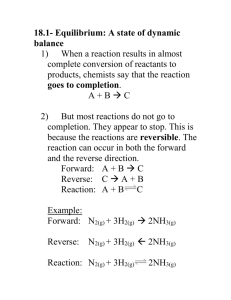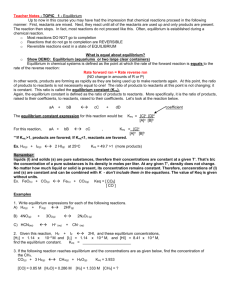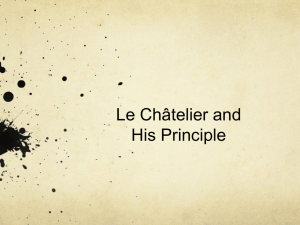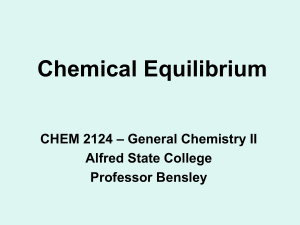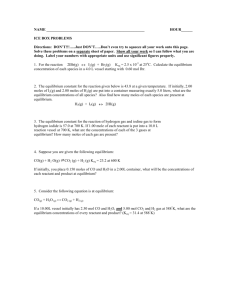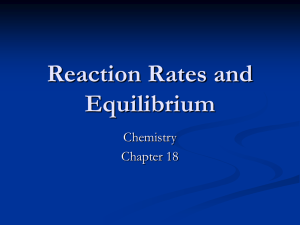Unit 11: Kinetics & Equilibrium Review Sheet
advertisement
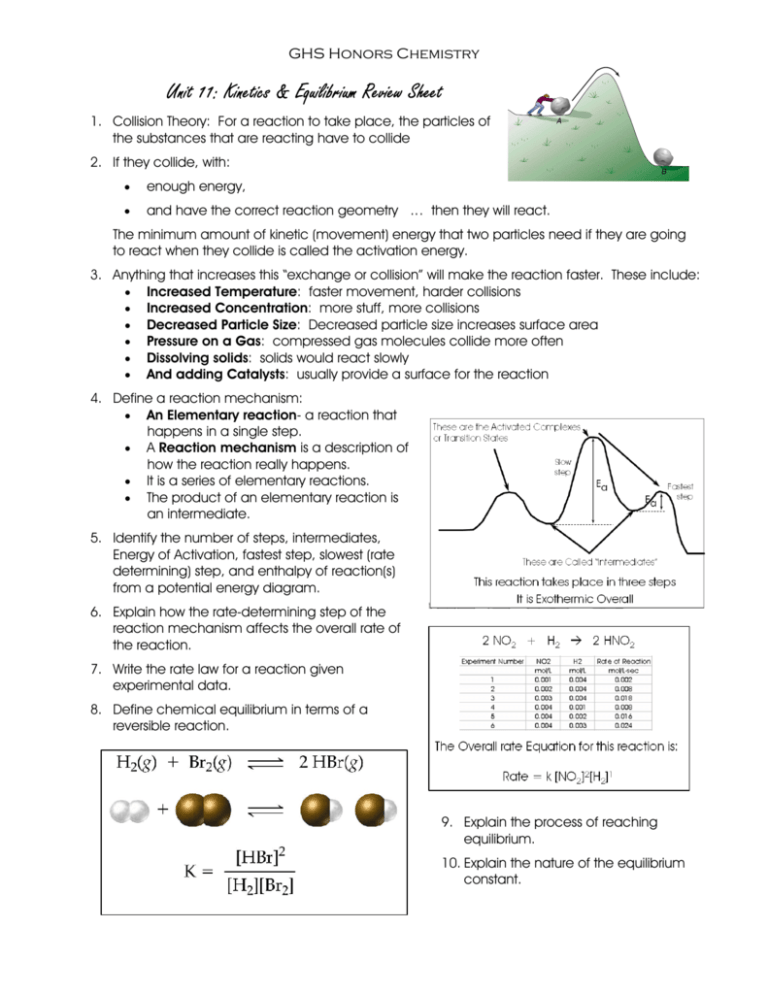
GHS Honors Chemistry Unit 11: Kinetics & Equilibrium Review Sheet 1. Collision Theory: For a reaction to take place, the particles of the substances that are reacting have to collide 2. If they collide, with: • enough energy, • and have the correct reaction geometry … then they will react. The minimum amount of kinetic (movement) energy that two particles need if they are going to react when they collide is called the activation energy. 3. Anything that increases this “exchange or collision” will make the reaction faster. These include: • Increased Temperature: faster movement, harder collisions • Increased Concentration: more stuff, more collisions • Decreased Particle Size: Decreased particle size increases surface area • Pressure on a Gas: compressed gas molecules collide more often • Dissolving solids: solids would react slowly • And adding Catalysts: usually provide a surface for the reaction 4. Define a reaction mechanism: • An Elementary reaction- a reaction that happens in a single step. • A Reaction mechanism is a description of how the reaction really happens. • It is a series of elementary reactions. • The product of an elementary reaction is an intermediate. 5. Identify the number of steps, intermediates, Energy of Activation, fastest step, slowest (rate determining) step, and enthalpy of reaction(s) from a potential energy diagram. 6. Explain how the rate-determining step of the reaction mechanism affects the overall rate of the reaction. 7. Write the rate law for a reaction given experimental data. 8. Define chemical equilibrium in terms of a reversible reaction. 9. Explain the process of reaching equilibrium. 10. Explain the nature of the equilibrium constant. GHS Honors Chemistry 11. Write an equilibrium constant expression for a reaction and compute its value from experimental data. 12. Predict changes in the equilibrium position due to changes in concentration, temperature and pressure using Le Chatelier’s principle. a. An increase in concentration on one side of an equation favors or drives the reaction to the opposite side. • adding reactants favors products • adding products favors reactants • Keq remains the same b. An increase in temperature favors or drives an endothermic reaction forward to products. • Keq is increased c. An increase in temperature drives an exothermic reaction backwards to reactants. • Keq is decreased d. An increase in pressure drives a reaction from the higher moles of gas, towards the side with fewer moles of gas. • Keq does not change e. Adding a catalyst does not alter the relative amounts of reactant and product. Forward reaction happens more easily and so does the reverse reaction. Equilibrium is only reached faster. Keq does not change 13. Use the I.C.E. method to determine initial and final equilibrium concentrations for any reaction at equilibrium, as well as the Keq value. • There were two types of ICE problems that we covered in class. • For the first type, you are given the initial concentrations of the reactants, and the equilibrium concentration of one of the products. From this, you can calculate all of the equilibrium concentrations, as well as the Keq. • For the second type, you are given the initial concentrations of the reactants, as well as the Keq, and are asked to calculate all of the equilibrium concentrations. 14. Calculate ion concentrations of slightly soluble salts using the solubility product constant.

